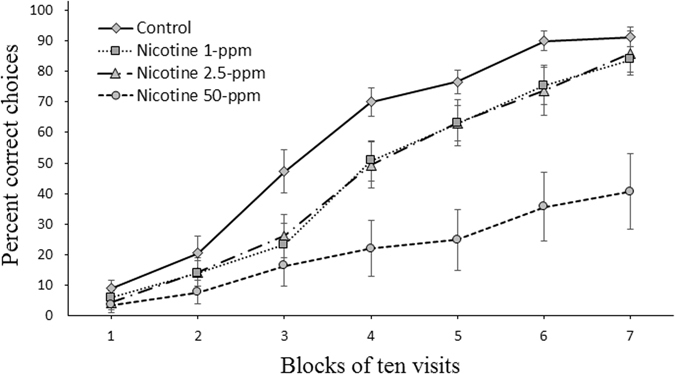Figure 3.

Nicotine previously encountered in nectar prompts bumblebees to make suboptimal choices in terms of reward. Reversal learning curve (mean choice accuracy ± SEM). After the forward learning phase, each bee underwent an individual reversal learning procedure in which the rewarding and unrewarding flower colours were switched and the rewarding flower for all groups provided sucrose solution (without nicotine). For each bee (n = 60) 70 consecutive visits were recorded. Learning curve for each group was generated from the mean choice accuracies (percentage correct choices made) for every consecutive block of 10 choices. Overall nicotine at 50-ppm strongly reduced the speed of learning (P < 0.001). A poorer performance than controls, yet not statistically significant, was also observed in bees previously exposed to the other two tested doses (1-ppm: P = 0.15, 2.5-ppm: P = 0.31).
